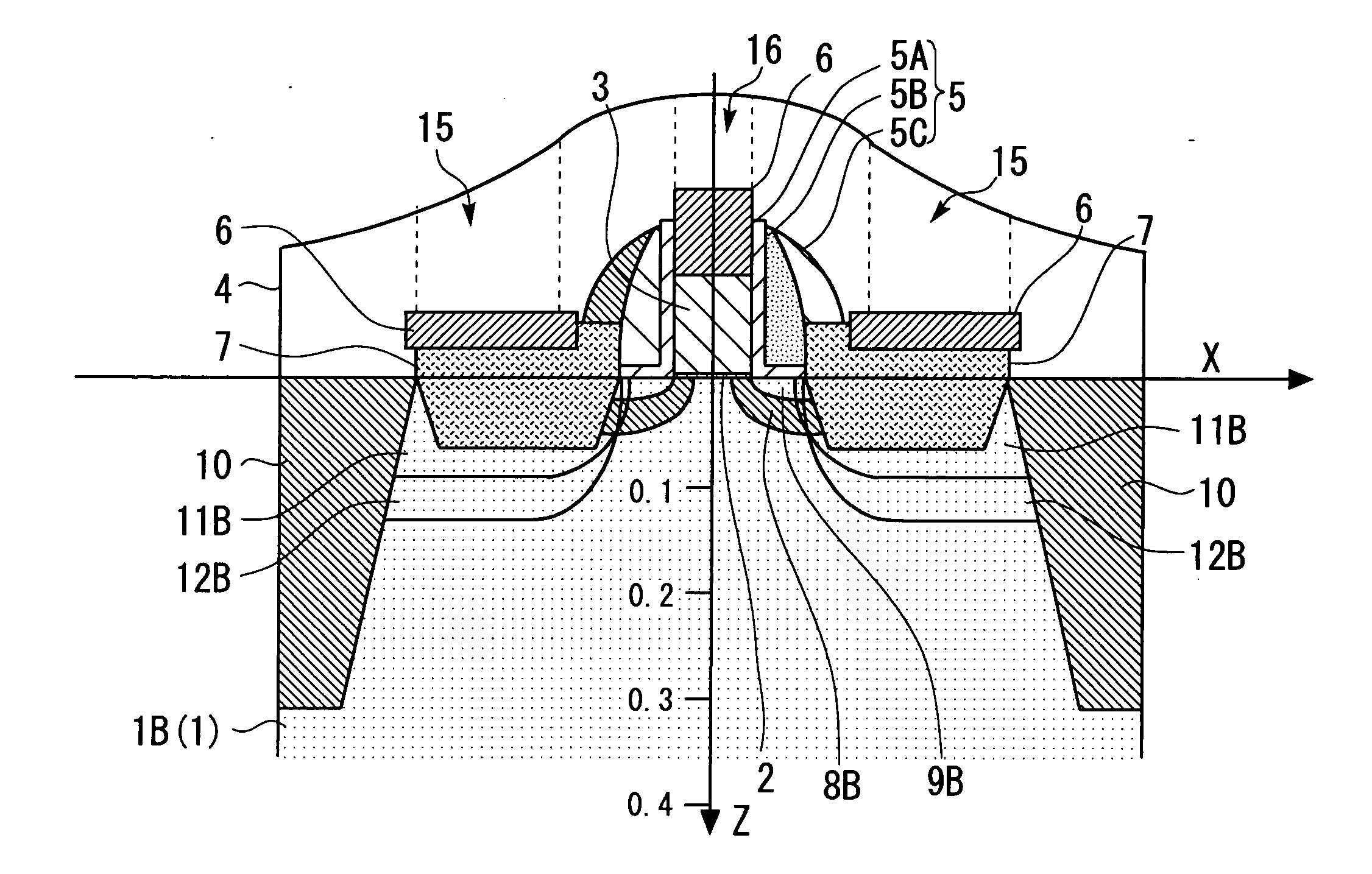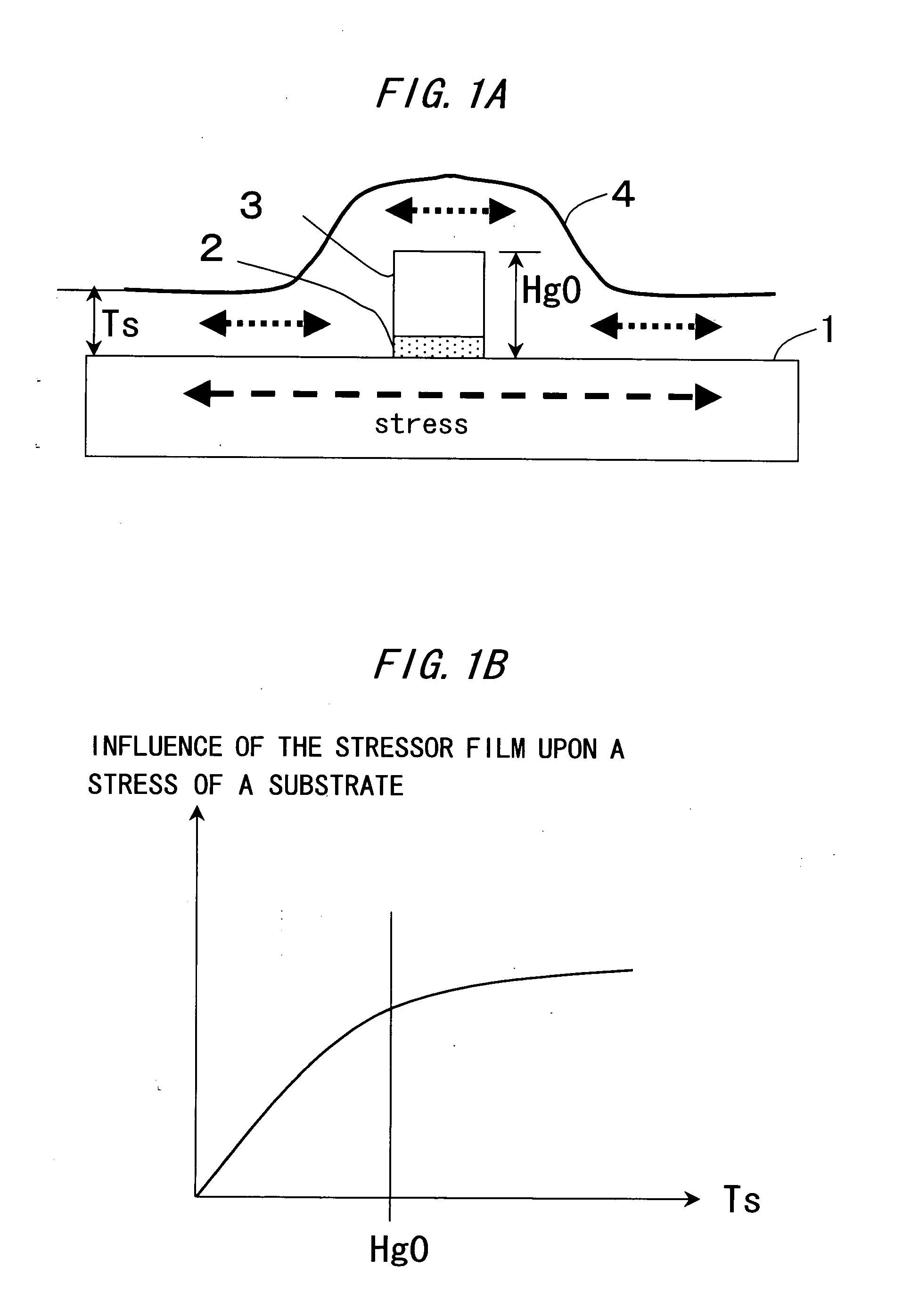Semiconductor device and semiconductor device manufacturing method
- Summary
- Abstract
- Description
- Claims
- Application Information
AI Technical Summary
Benefits of technology
Problems solved by technology
Method used
Image
Examples
first embodiment
[0061] Next, the gate 3 is formed of, e.g., polysilicon(polycrystalline silicon) by a known process on the semiconductor substrate 1. Herein, for example, after the polysilicon has been formed (deposited) on the substrate surface by the CVD method etc, a photoresist is coated, and the photoresist excluding the area of the gate 3 is removed. Then, the area of the gate 3 is protected by the photoresist, and an area other than the area of the gate 3 is etched. In the first embodiment, at this point of time the film thickness of the gate 3 is on the order of 100 nm.
[0062] Next, as shown in FIG. 5A, an N-type extension layer 9A and a P-type pocket layer 8A are formed in the NMOS transistor portion (the P-well 1A portion). The N-type extension layer 9A is formed by implanting, e.g., an impurity such as arsenic (or phosphorous) (herein, the arsenic is used with an energy of 1.0 Kev and with a dose of 1×1015). Further, the P-type pocket layer 8A is formed by implanting the impurity such as ...
second embodiment
[0099] As discussed above, according to the semiconductor device in the second embodiment, in the case where the film with the tensile stress occurred is formed as the stressor film 4, the electron mobility in the NMOS transistor can be improved. Further, the influence by the stressor film 4 upon the PMOS transistor is reduced by decreasing the height of the gate 3B of the PMOS transistor, whereby the tensile stress can be reduced. Accordingly, the decrease in the hole mobility of the PMOS transistor can be restrained.
[0100] The second embodiment has dealt with the semiconductor device in which the film with the tensile stress occurred is formed as the stressor film 4 by decreasing the height of the gate 3B of the PMOS transistor. The second embodiment has dealt specifically with the semiconductor device having none of the stressor portion in the recessed portion 14 in the area of the P-type first source / drain 11B. As a substitute for this configuration, there may be configured a se...
PUM
 Login to View More
Login to View More Abstract
Description
Claims
Application Information
 Login to View More
Login to View More - R&D
- Intellectual Property
- Life Sciences
- Materials
- Tech Scout
- Unparalleled Data Quality
- Higher Quality Content
- 60% Fewer Hallucinations
Browse by: Latest US Patents, China's latest patents, Technical Efficacy Thesaurus, Application Domain, Technology Topic, Popular Technical Reports.
© 2025 PatSnap. All rights reserved.Legal|Privacy policy|Modern Slavery Act Transparency Statement|Sitemap|About US| Contact US: help@patsnap.com



